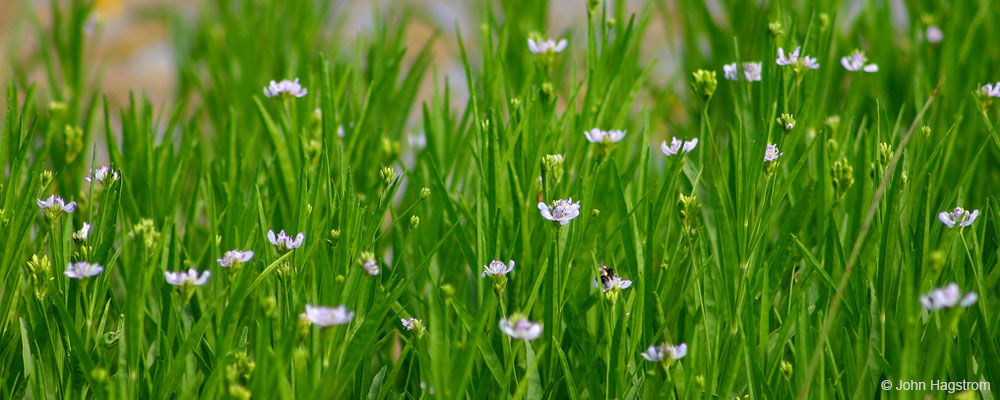
Aquatic Plant Ecology
The Center for Applied Aquatic Ecology studies the functioning of benthic communities in estuarine systems, rivers, and coastal regions under pristine and contaminated conditions. Seasonal dynamics of plants such as water willow Justicia americana, seagrass Zostera marina L. and communities of microorganisms (algae, bacteria) are influenced by natural factors like oxygen limitation, nutrient loading, and human influences such as habitat deterioration and elevated concentrations of toxicants. Integrating field and laboratory experiments leads to a better understanding of the combined effect of natural and anthropogenic stress factors.
The Center has published a number of peer-reviewed articles on eelgrass Zostera marina, shoalgrass Halodule wrightii, widgeongrass Ruppia maritima, and water willow Justicia americana.
Zostera marina L.
Cultural eutrophication and global warming are among the most studied processes relating to anthropogenic perturbations in estuarine systems, and continue to be a major concern for environmental scientists/ managers. To study how important marine ecosystems will respond to increases in nutrients and temperature, experimental mesocosm systems were utilized to evaluate the growth and development of Zostera marina L. in response to increased water temperature and water column nitrates.
Data collected from the experiment shows that an increased temperature of 3-4°C above ambient, or an increase of nitrate (8 µM pulsed daily), can reduce shoot density by 40 and 48% respectively. It may also decrease leaf and root development, and alter internal carbon and nitrogen compositions.
By reducing shoot density, decreasing leaf and root development, and altering internal carbon and nitrogen compositions, there may be significant reductions in the growth and development of Zostera marina L.
For more details on this experiment, please go to our Publications page.
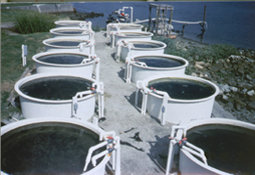
Experimental mescosms in which Zostera was grown and studied.
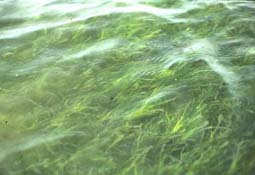
Control (unenriched) plants in a healthy established seagrass bed.

Plants that were exposed to low levels of water-column nitrate enrichment.
Justicia americana (American Water Willow)
Justicia americana (water willow) is a valuable habitat species for supporting aquatic life. Little is known about the ecology of this emergent species, or the degree to which human development and related activities influence its habitat value. In the Narrows Reservoir (Badin Lake) near Charlotte, NC, there are about 900 boat docks or piers. With the present rate of shoreline development, many new docks are anticipated over the next decade. The CAAE has been (i) mapping the present distribution and abundance of J. americana and other aquatic plants in the Narrows Reservoir; (ii) studying the influence of selected environmental factors on J. americana; (iii) establishing baseline control plots that will allow for long-term (years) evaluation of J. americana density, biomass, and other indicators of plant success; and (iv) assessing the habitat value of J. americana to fish. The overall goal of this project is to provide recommendations to minimize adverse influences from boat dock construction / use on J. americana habitats.
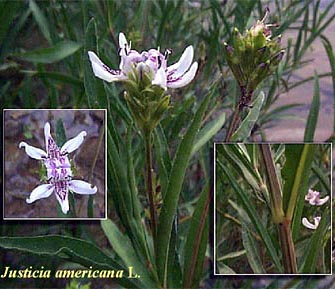
Closeups of the various parts of Justicia americana.
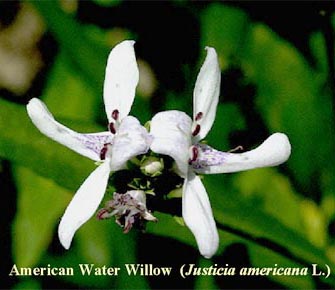
Justicia americana flower in full bloom.
Reservoir Experiments
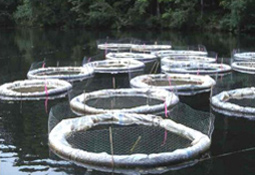
Fresh water mesocosm deployed in a reservoir for an experiment on clay sediment.
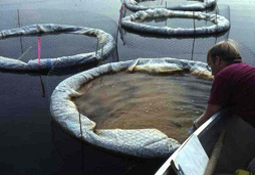
Clay being added to a replicate enclosure (limnocorral).
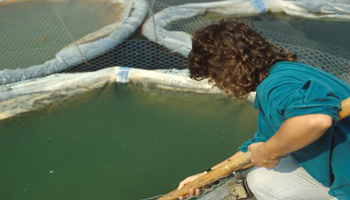
Cyanobacteria bloom in response to phosphorus enrichment.
